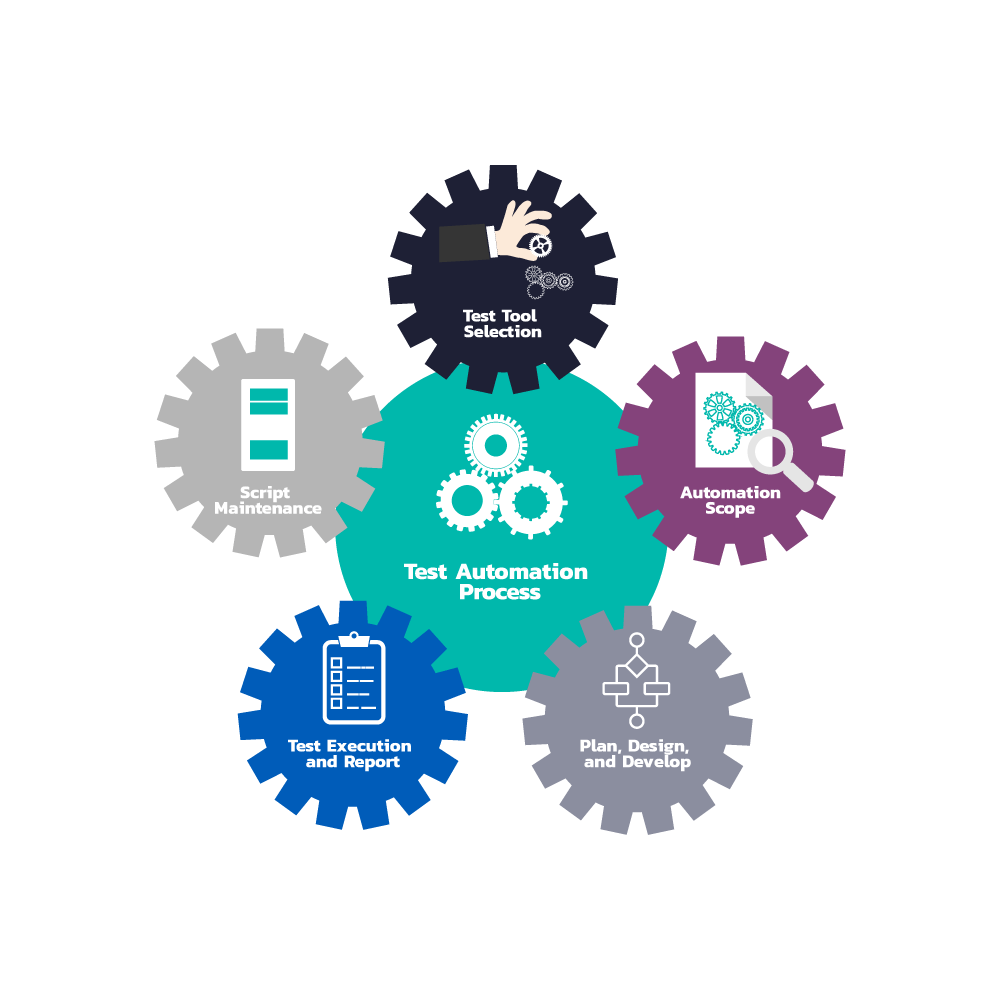Get the Most from Automated and Manual Functional Test
As mobile software becomes more complex and customer demand for quality increases, mobile application testing must be at the forefront of any project. Just one small “quirk” or bug can be damaging for a company’s reputation. Integrating automated and manual functional test into every phase of the project (rather than a separate task tacked onto the end) allows the team to catch issues before they are released to the customer.
Effective testing involves a combination of manual and automated test methodologies. Manual testing uses human testers to execute scripts to validate a system. After each test, the tester documents the results and reports findings to the team. They repeat their testing for each feature until the team determines everything works as expected. Automated testing employs technology to execute test scripts. Developers or advanced level QA personnel usually create automated test scripts. These scripts can be run repeatedly to unit test, emulate environments for load or performance testing, and run tests when manual testing would take too long. Keep reading for more details on automated and manual functional tests and how to get the most from each for your testing strategy.
What is Functional Testing and Why Is It Important?
In a world where customer demand drives innovation, companies must meet that demand with software that not only meets but exceeds customer expectations. As mobile software becomes increasingly complex, the need for thorough mobile application testing intensifies. That is where functional testing comes in. Functional testing validates that a system works according to the requirements specification. In a traditional waterfall methodology, this type of testing took place as a separate phase after development. However, companies can no longer afford to employ this approach. Requirements and needs change so quickly that waiting until the validation phase to verify them puts the company behind on releasing critical updates. That is why companies have evolved into an Agile software development approach.
Following the Agile methodology, companies can adapt to rapidly changing customer needs. The Agile process consists of developing and conducting automated and manual functional tests, then releasing software in short cycles — usually two weeks. This approach also allows the team to release more features in a shorter amount of time with greater flexibility for changing requirements.
The Difference Between Automated and Manual Functional Tests

Functional mobile application testing can be completed by either manual verification, automated testing or, more commonly, both. Manual verification is a time-consuming effort that involves humans executing a series of test scripts. After the requirements have been handed down, the test manager works with the QA team to analyze the requirements and define a testing strategy. They then write a series of scripts that comprise the test suite. As each test is completed, the analyst documents the results and alerts the development staff of any issues. The cycle repeats until all items have been verified. Manual verification can be a lengthy process — it takes time and effort to re-run each script. Not only that, if an issue arises that involves a change to the test script, that manual effort can impact the testing timeline.
Automated functional testing, on the other hand, uses automation tools to perform some of the validation tasks. Automated tests are written in a programming or scripting language. These tests represent instructions for the automation tool to execute the test scripts. Automated tests can speed up the testing cycle since they can be run repeatedly with little human intervention.
Automated vs. Manual Testing: Which is Right for You?
Most projects use some combination of automated and manual testing. Why use both? Each serves a specific purpose and brings specific benefits to the project. Manual testing typically focuses on testing the UI and business logic and is ideal for validating usability functions of the software. This includes fonts, text size, text placement and colors that are more suited to human review. Another benefit of manual verification is that expert testers may have more domain knowledge to validate a feature properly.
Automated tests bring a level of efficiency to the test cycle that isn’t possible with manual validation. Using automation enables the team to repeatedly evaluate the functions of the system without requiring user input. Automated tests are best suited to emulate a real environment for load and performance testing or for running regression tests. While it can do some level of user testing, automated testing focuses more on code or infrastructure validation.
Automation Testing Can Get Your Product to Market Faster
- Comprehensive Testing Strategy: Automated testing tools can help develop a more robust testing plan that results in higher-quality software. These tools enable test teams to prioritize test cases, identify potential risks, and execute tests efficiently. As a result, the QA testing process becomes more efficient and accurate, leading to reduced time-to-market.
- Resource Optimization: Automation testing minimizes manual intervention, which can save both time and resources. It can also allow QA testers to focus on more complex tasks that require more manual testing, while automated software testing tools can perform repetitive and time-consuming tasks. When executed properly, this type of resource optimization can lead to increased productivity, reduced costs, and faster software development cycles.
- Enhanced Testing Coverage: Automated testing tools can execute a large number of tests in parallel, increasing testing coverage and reducing overall test execution time. This comprehensive testing coverage helps test the software more thoroughly, enabling quicker identification and resolution of bugs and defects. By employing an automated testing program, you can accelerate the time-to-market for your software.
- Precision and Consistency: Automation testing eliminates the possibility of human errors, ensuring precise results and consistent test execution. By following a set of predefined test cases, automated tools maintain a high level of accuracy throughout the testing process, reducing the likelihood of false positives or negatives. This reliability ultimately contributes to a faster and more efficient software release.
- Real-Time Feedback for Developers: Automated testing tools can provide developers with immediate feedback on the software’s performance and functionality. Enabling real-time insight enables developers to address issues as they arise, streamlining the development cycle. By fostering continuous improvement, real-time feedback accelerates the software’s time-to-market.
Automated Testing and Test-Driven Development
With Test-Driven Development (TDD) for mobile application testing, developers first write a test then write the corresponding code. After the tests are written, the developers run the unit tests to validate that the code works. Based on the outcome, they may decide to refactor the code, rewrite the test, or write new tests to verify the item in question.
The fast-paced rate at which teams must release software puts them under pressure to get it right the first time. Given that, they must take measures to ensure their code works with each incremental release. TDD gives developers the tools they need to validate their code while they work so they can catch issues in their local or development environment before it ever makes it to higher level environments.
Get the Most for Your Testing Dollar with QualityLogic’s Testing Solution
QualityLogic has over 30 years of testing experience. Our team of functional testing experts has experience in:
• Mobile application testing
• Website apps
• OTT and streaming media
• API testing
• eCommerce
• Many more
We employ a combination of automated and manual functional testing techniques, including:
• Functional testing
• Test automation
• Usability
• Accessibility
• Load and performance
• Regression
• Exploratory
No two projects are alike. That is why we design a testing strategy specific to your needs. We work with you to develop a project plan and budget based on your requirements. Once the project is approved, we staff the project with experts who have the skill and expertise needed to test your software. Our team conducts regular check-ins to provide a status of things and review of the budget. If you need to adjust the budget or team size for your engagement, we will happily do so with no added fees for making the change to the contract. We will continue to work with you until you are satisfied with the outcome.
Complete and effective mobile application testing is only possible through a combination of manual and automated tests. Using each, companies can validate the inner workings, as well as the UI and usability features of an application. With thorough testing, companies can root out issues that could have negative consequences, not the least of which is a damaged reputation. Contact one of our testing experts today to learn how we can develop a customized, flexible testing solution for your project.

